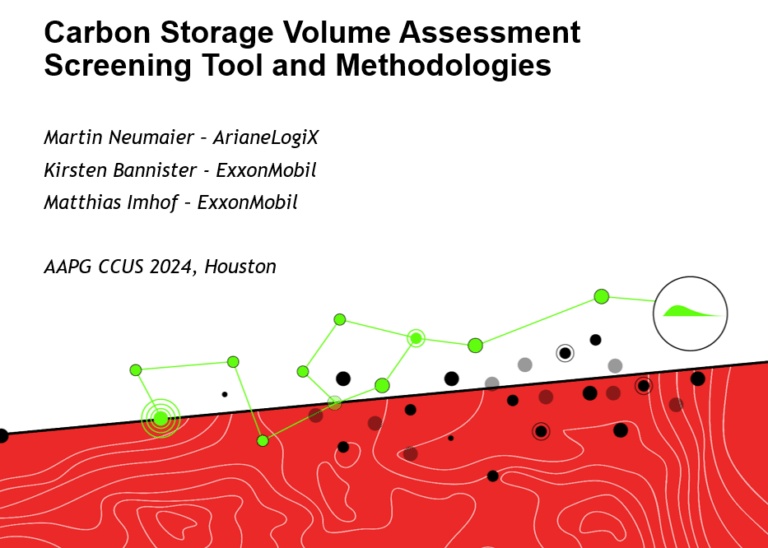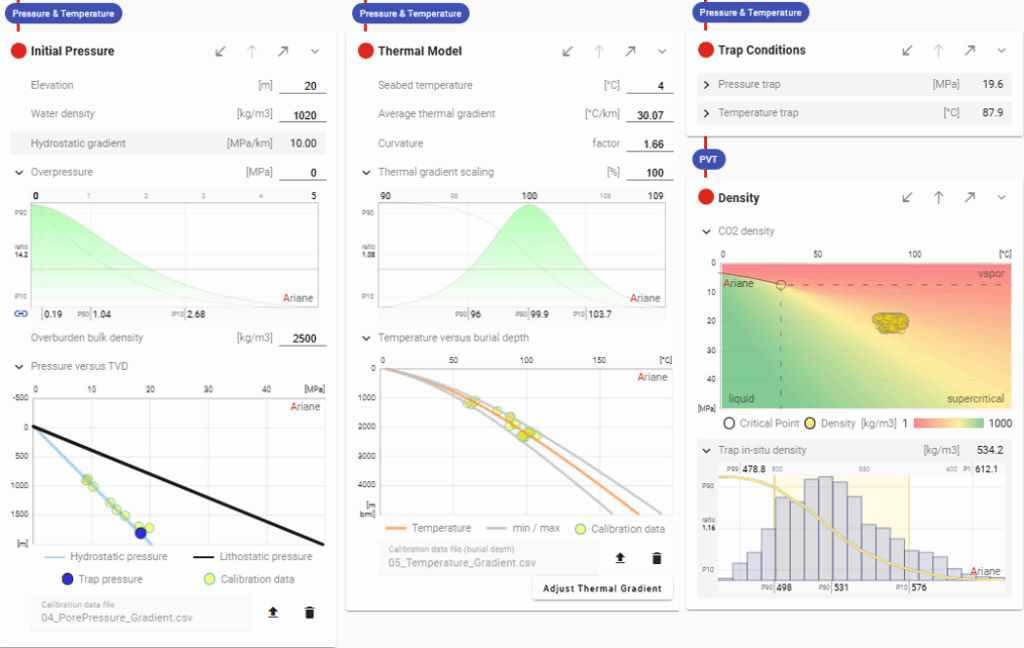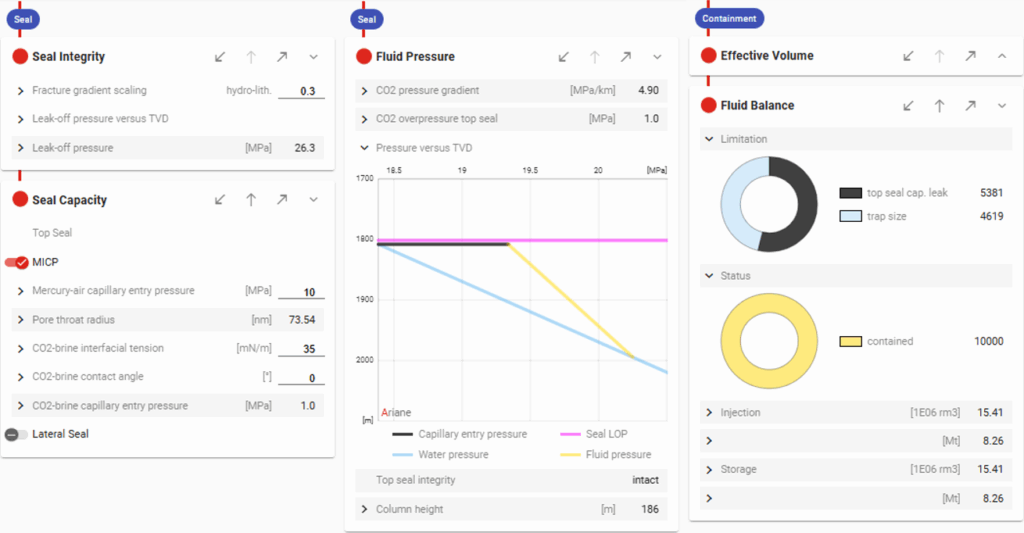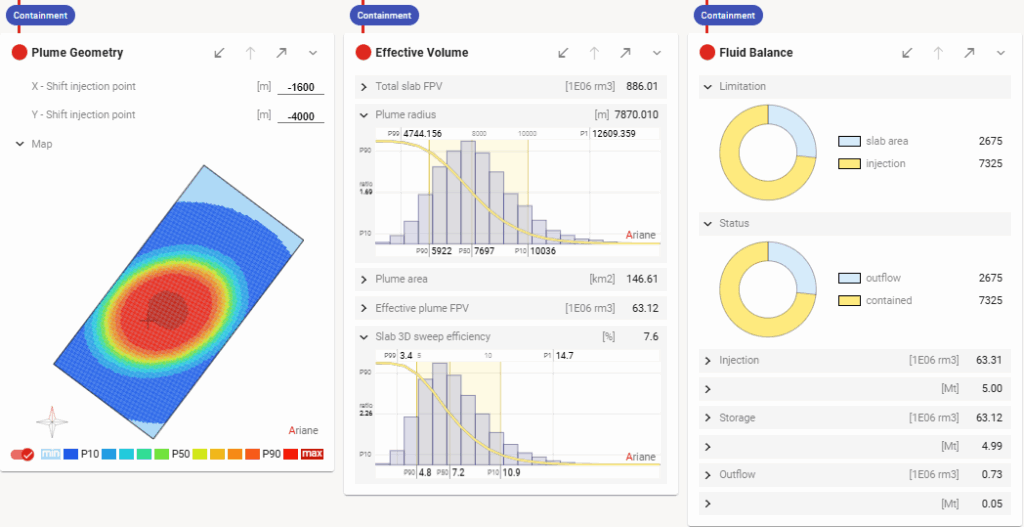Ariane for Carbon Storage
The physical environments suitable for carbon storage vary significantly. CO2 can be injected into either structural traps, where it forms a focused accumulation, or unstructured reservoirs, where it is expected to develop as a plume. For the CO2 to remain in a supercritical phase, specific minimum pressure and temperature conditions must be met. During the initial screening phase, it is crucial to consider factors such as overpressures, seal integrity, and storage capacity. With Ariane for Carbon Storage, prospects of different nature can be assessed at various levels of complexity.
Ariane Highlights
Find out how intuitive and interactive your assessments could be! Say goodbye to spreadsheets…
An assessment in less than 1 minute...
- You need a very quick estimate of the resource ranges of an area of interest
- You provide your best estimates for gross rock volume, reservoir parameters and density, as well as their uncertainty distributions
- You check which parameter matters most in the sensitivity analysis
- You run Monte Carlo and get uncertainty ranges for theoretical and effective resource
Ariane provides you with a robust estimation, straight forward, easy to understand and communicate, transparent for QC.
Can you really store what the trap promises?
Your trap has plenty of pore volume and a large theoretical resource – but you have some doubts about the seal…
You calibrate the fracture gradient with LOP data and specify top seal capillary entry pressure.
You test seal capacity end members to see the impact on column height, and then specify uncertainty ranges.
You run a quick Monte Carlo simulation to see possible column heights and the likelihood that your trap is seal-limited.
Ariane integrates pore volume, PVT, pressures and seal to provide robust estimates of effective storage resources.
Will a 50 Mt plume fit into your concession?
You evaluate an opportunity to store 50 Mt of CO2 in an open, unstructured reservoir.
You have set up your pore volume and PVT uncertainty, now you would like to see your injected CO2 represented as a plume.
You provide some geometrical specifications about the expected general plume shape and give it some uncertainty,.
You run a quick Monte Carlo simulation and get the radius and area of the plume, as well as the macro-storage efficiency.
Ariane gives you a first order estimation of the likelihood of the plume remaining in the area of review, as well as the possible outflow volumes and masses.
Standard Assessment
Standard carbon storage assessments are simple calculations used for screening, with the goal of estimating the order of magnitude of risk and storage potential for an area or a specified trap.
The calculation of the effective CO2 mass in Ariane involves total pore volume, a storage efficiency factor and CO2 density.
PVT, Phase & Density
For CO2 to be in the supercritical “dense” phase, specific pre-injection pressure and temperature conditions must be present.
Ariane calculates the range of possible pre-injection CO2 subsurface density based on regional pressure and thermal gradients, calibrated with data and including uncertainty ranges.
Seal & Containment
Unconfined Aquifers
In unstructured reservoirs, injected CO2 is thought to saturate the pore space in form of a plume.
CO2 plumes can be geometrically described in Ariane and placed into the pore volume to provide first estimates of storage efficiency and whether the plume is likely to fit into an area of review, or whether lateral outflow is possible.
Aggregation of Prospects
To estimate the risk and resources for a larger area, or a more complex trap involving multiple layers, reservoir segments are “rolled up”.
Individual Ariane assessment can be aggregated to larger prospects or portfolios, with a fully probabilistic co-simulation honouring risk and volume correlations between segments.
Selected Resources





